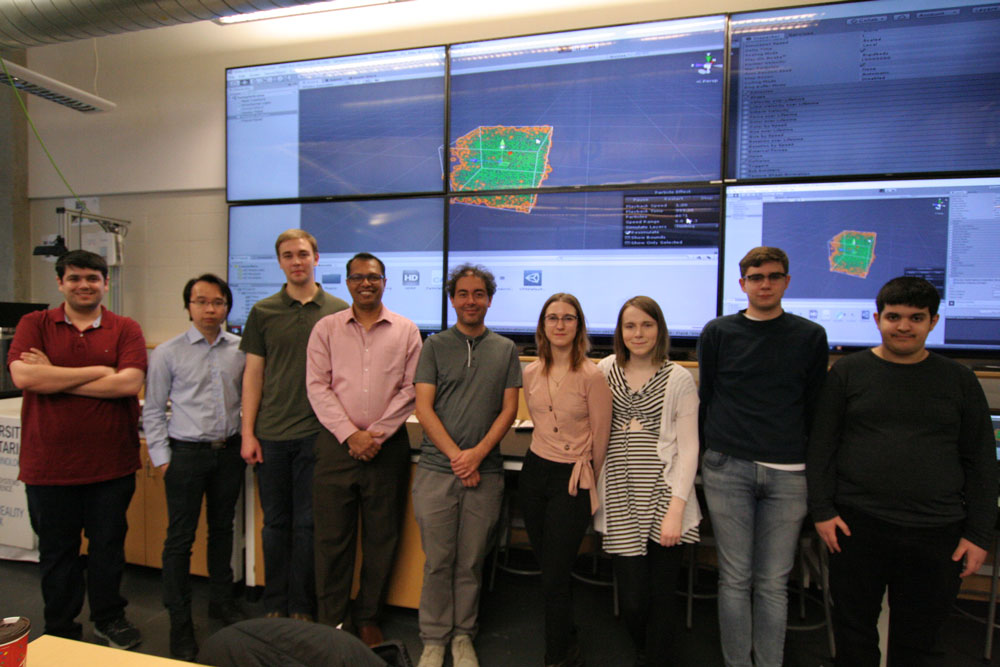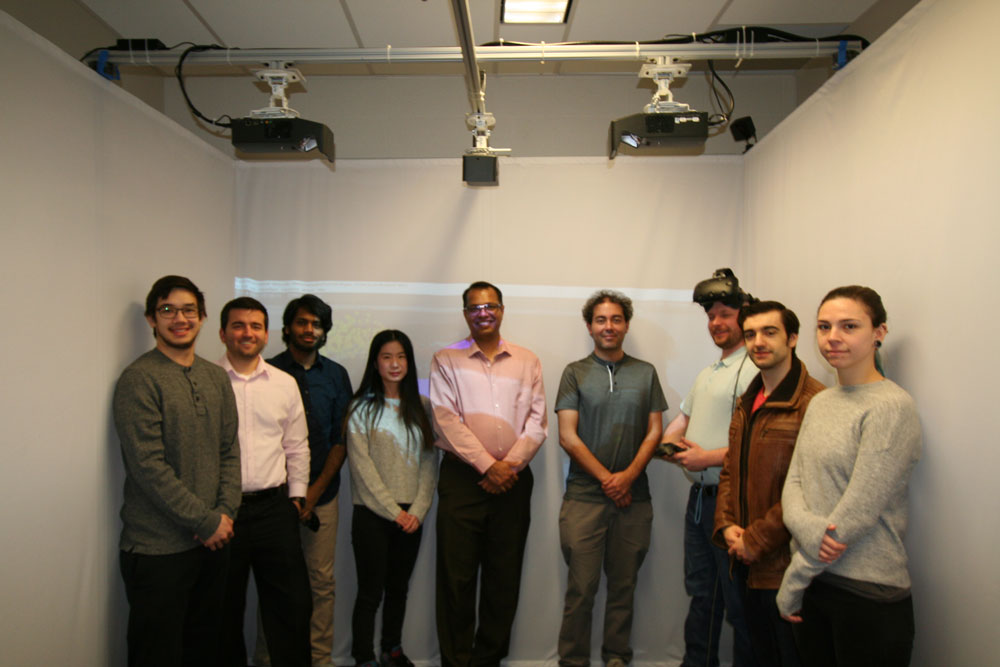Ontario Tech students deploy interactive virtual reality to ‘visualize’ invisible radiation
Nuclear Engineering students demo high-tech applications of VR radiation field simulators
June 12, 2019

Radiation exists almost everywhere in our world. Electronics, machinery, basements and the ground constantly emit ionizing radiation: subatomic particles and electromagnetic waves moving at high speeds that humans cannot detect through sight, touch or taste. These radioactive particles can also be found in unexpected objects, such as the banana you had for breakfast or the ceramic bowl from which you ate your cereal.
Low levels of background radiation such as those found in food are harmless to humans. But exposure to ionizing radiation found in the higher part of the electromagnetic spectrum such as x-rays, gamma rays and artificial particle accelerators do pose health hazards.
Ionizing radiation has many military, industrial and medical uses. Accurately measuring it to ensure humans avoid dangerous exposure requires scientific detection through a device such as a Geiger counter.
As part of their final-year capstone (senior thesis) projects at Ontario Tech University, two groups of Faculty of Energy Systems and Nuclear Science (FESNS) students demonstrated how interactive virtual reality (VR) can visualize ionizing radiation through simulated measurements.
Using VR technology, one group built a computer-generated representation of ionizing radiation found a typical FESNS lab. The second group looked at simulating radiation measurements in a nuclear post-emergency scenario where there was airborne radiation in a community adjacent to a nuclear plant.
Group 2 teamed up with Game Development students in the Faculty of Business and Information Technology who helped with the graphics and ‘game’ simulation. Dubbed ‘Gamma Gear’, the radiation visualization system they developed features a VR headset and (game sensation) rumble vest, which provides visual and touch-based cues simulating background and human-made ionizing radiation interactions with the body.
VR radiation field simulators are a promising new detection tool with wide applicability and accessibility such as safe scenario training for nuclear energy workers, first responders and even civilians. Nuclear engineering professors can use radiation field simulators as a teaching tool during lectures and lab sessions.
Associate Teaching Professor and Laboratory Manager Sharman Perera, PhD candidate; Assistant Professor Alvaro Quevedo, PhD; Professor Ed Waller, PhD; and Akira Tokuhiro, PhD, FESNS Dean, supervised the students with their capstone projects.
Did you know?
The probability of an airborne radiation release and contaminant breach from a nuclear power plant is one in a billion. The probability of failure in a commercial aircraft is one in 114,000.
2 > 1




